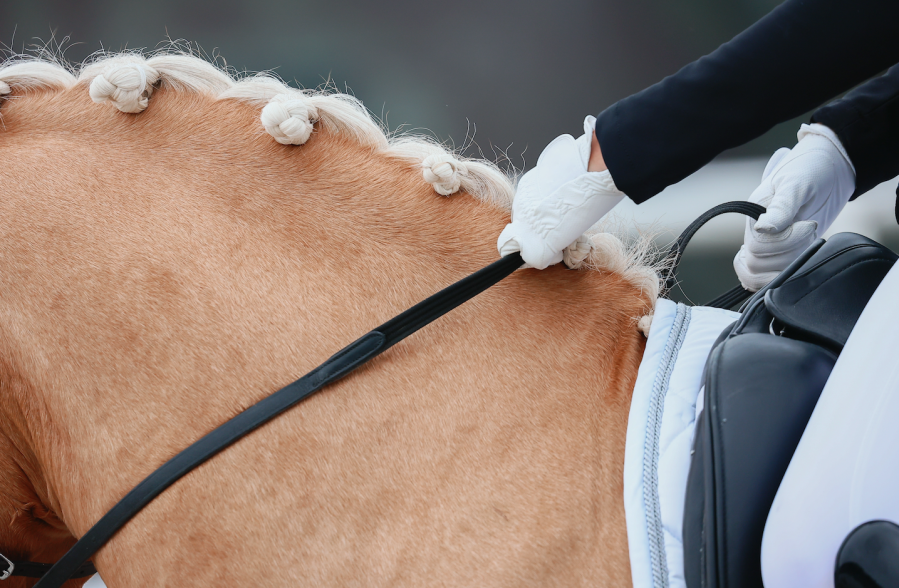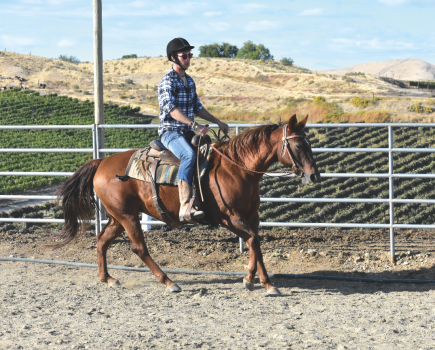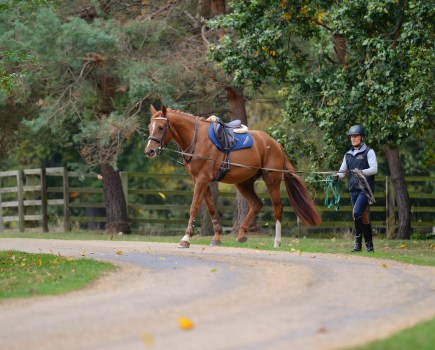Every riding horse needs to be light in the hand and even in the rein contact when you’re schooling. It is easy, however, for them to start to feel a little ‘heavy’ in your hand because they have fallen on to the forehand.
This isn’t a nice feeling for either of you and will prevent your horse working in a true contact and engaging his hind leg. Ultimately, this will affect how well your horse works at home and impact your dressage scores or performance in the show ring. It won’t help with your jumping either.
“There’s no reason why any horse shouldn’t be light and flexible working in self-carriage. It’s all in the training,” explains leading showing producer Katie Jerram-Hunnable.
“Just like any horse, if he’s slow off the leg, then there are exercises you can do to help with this. Don’t accept your horse being lazy, no matter what breed.”
Katie uses a schooling whip to help riders gauge whether they are holding the reins in the correct position, consistently.
Are your hands level?
- Ride your warm-up as usual, in walk, trot and canter. This is the time to assess how your horse feels through your hands. Are you being pulled forwards? Does the weight in the reins feel uneven?
- If the answer is yes, pick up a schooling whip.
- Hold the whip horizontally below each of your thumbs.
- The whip will put your hands in a great position, keeping the thumbs on top, where they should be.
- Work for 10 minutes in all gaits with the schooling whip held in this position. It keeps your hands level and consistent, without being fixed, which in turn stops your horse from either becoming uneven or leaning.
- Keep glancing at your hands every few metres, as this will provide visual evidence of what’s happening through the rein.
This is a great exercise to keep up your sleeve and use every now and then as a reminder/to check how your hand position is doing.
Even if you nail it first time, there is still value in repeating at another time. If you ride multiple horses, try it on them all too — each horse’s own individual way of going may influence how you are sitting in the saddle.
What if my hands are not level?
If you find you’re struggling to maintain a level, light rein contact, there will be a reason why.
If you’ve eliminated a problem with your horse as being the cause — for example pain, is he comfortable in his mouth, does his tack fit correctly, is he lame? — ask an instructor for their assistance.
It might be that you need to ride your horse with more leg so that they are working into the bridle, or perhaps your horse has learned to lean on you because you have a restrictive hand.
There are lots of reasons why it might be happening and while it might not be a quick fix, it is something that you’re able to work on in order a achieve a happier working horse and rider.
Main image © Your Horse Library/Kelsey Media Ltd. NB this is a stock image and the exercise explained in this article is not pictured









